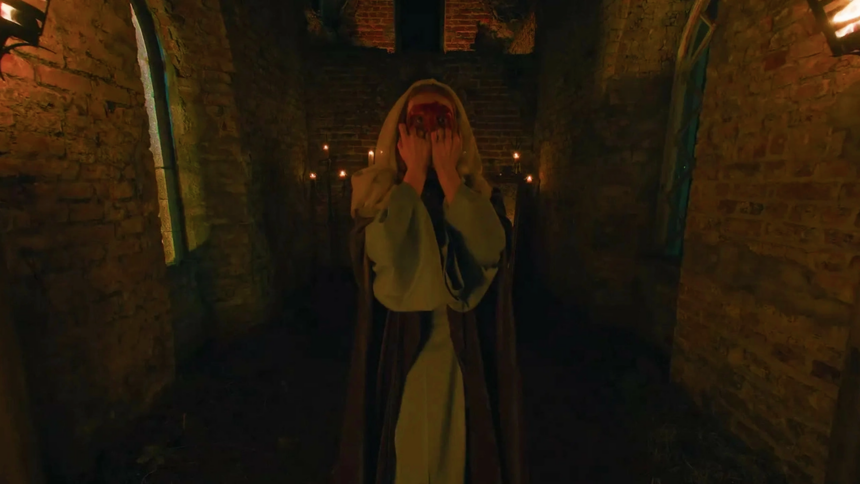Review of the VR horror series "The Faceless Lady": Scary games set in Irish walls

In the VR horror series The Faceless Lady, Eli Roth invites you into a dangerous game about the caste Kilolc. I've seen the first half of the series, and I'm hungry for more.
Meta releases the first episodic VR horror series in collaboration with Eli Roth. The Faceless Lady is set in Ireland and is based on the popular legend of Lady Margaret Hodnett, who is said to haunt Kilolc Castle. Three couples are invited to the castle for a supposedly harmless game that turns out differently than expected.
Currently, four of the six episodes have already been released, which you can watch with Meta Quest 3, Quest 2 or Quest Pro. A new episode will be released every Thursday on Meta TV until the story ends with the sixth and final episode.
Tension builds as each episode unfolds
"The Faceless Lady" starts with the backstory of Lady Margaret Hodnett and explains how she became the Faceless Lady. The scenes in the past sometimes lack a bit of light for me. A lot of the areas I can look at in the 180-degree environment are very dark. This leaves my curiosity a little unsatisfied. However, as soon as the first couple is introduced to take part in the games around Castle Kilolc, this problem becomes a thing of the past.
Thanks to the overall high production quality, the castle and especially the furnishings look fantastic. I would love to walk through Kilolc Castle in VR and explore everything. After all three couples have arrived and will be the main characters along with the lord of the castle, the mysterious games begin towards the end of the first episode.
In each of the following episodes, one of the dangerous games is played, which inevitably ends with the “elimination” of one of the participants. This is Roth's way of maintaining suspense from episode to episode — and he succeeds. Once a game is over and the toll has been taken, I am always curious to see the reactions of the remaining participants and the chasms that open up between them.

Lady Margaret Hodnett as she peels off her face. | Image: Meta Horizon Worlds.
Supernatural yet not over the top
While there are almost no supernatural events in the first episode, they become more frequent in the following episodes. Although the haunted castle setting and supernatural phenomena would lend themselves to this, jump scares and special effects are rarely interspersed. In most cases, the appearance of Lady Margaret's ghost is appropriately woven into the scenery. Other mysteries are also well staged.
Overall, however, the series lives more from the basic cluelessness of the main characters than from the CGI show values. As a viewer, I get excited with them and desperately want to find out what the secret is behind the events at Castle Kilolc. To find out, I accompany the contestants as they search for keys in the castle or make their way through a maze.
Entertaining VR experience with unprecedented possibilities
In The Faceless Lady, you can expect atmospheric scenery straight out of a creepy castle. The picture and camerawork are always fluid and never feel uncomfortable. Motion sickness should not be a problem. The ghost of Lady Margaret and the various supernatural events are visually well done, but clearly recognizable as CGI and not visual highlights. I'm a bit disappointed when it comes to the scare factor. I expected more from a horror VR experience by Eli Roth.
The plot of the series and its structure provide suspense, but I would have liked more immersion. Although there are first-person scenes, they would have worked much better, especially in the maze or the game of hide-and-seek in the dark. There are no jump scares at all in the first three episodes. Here, too, there are missed opportunities that could have provided exciting shock moments thanks to the free viewing angle.
All in all, The Faceless Lady is a good series so far, but I could probably watch it on a normal TV as well. The advantages of virtual reality are rarely used and there is little to discover except for the camera focus.
Note: Links to online stores in articles can be so-called affiliate links. If you buy through this link, MIXED receives a commission from the provider. For you the price does not change.